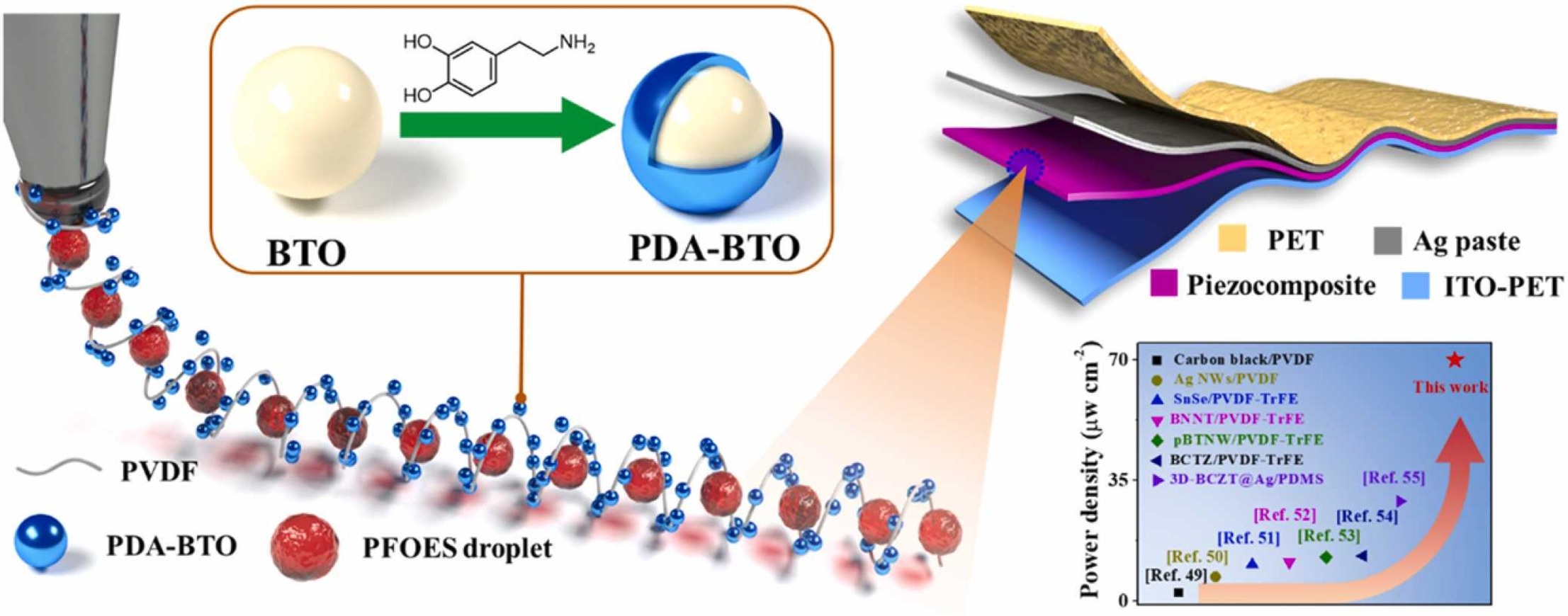The development of flexible nanogenerators that can convert passively generated environmental energy into electricity is crucial for sustainable energy generation. Herein, we rationally designed a polymer-nanoparticle-liquid (PNL) ternary composite, comprising polydopamine-modified barium titanate nanoparticles (PDA-BTO NPs) doped polyvinylidene fluoride (PVDF), and 1H,1H,2H,2H-perfluorodecyltriethoxysilane (PFOES) liquid nanodroplets, for application in piezoelectric nanogenerators (PENGs). The inter-discrete PFOES nanodroplets enabled the formation of a three-dimensional (3D) scaffold matrix in the ternary composite, which is highly beneficial for the stress transfer of PENGs. Finite-element analysis revealed that the ternary composite had a remarkably improved stress transfer ability due to the incorporation of highly deformable PFOES liquid nanodroplets, which increased the net stress exerted on PDA-BTO NPs and the PVDF matrix. The PNL composite-based PENG (PNL-PENG) device exhibited an enhanced piezoelectric performance, achieving an output voltage, current, and power density of 102 V, 10 µA, and 70 μW/cm2, respectively, which are record-high results compared to those achieved by binary composite-based PENGs. Moreover, the PNL-PENG also demonstrated tremendous potential to function as a highly sensitive tactile perception tool for shape recognition. The concept of PNL-PENG devices represents a milestone in the domain of human-machine interaction, taking a significant step toward the advancement of flexible and wearable electronics.
https://www.sciencedirect.com/science/article/pii/S2211285523004135
Published 2023. 08. 01
